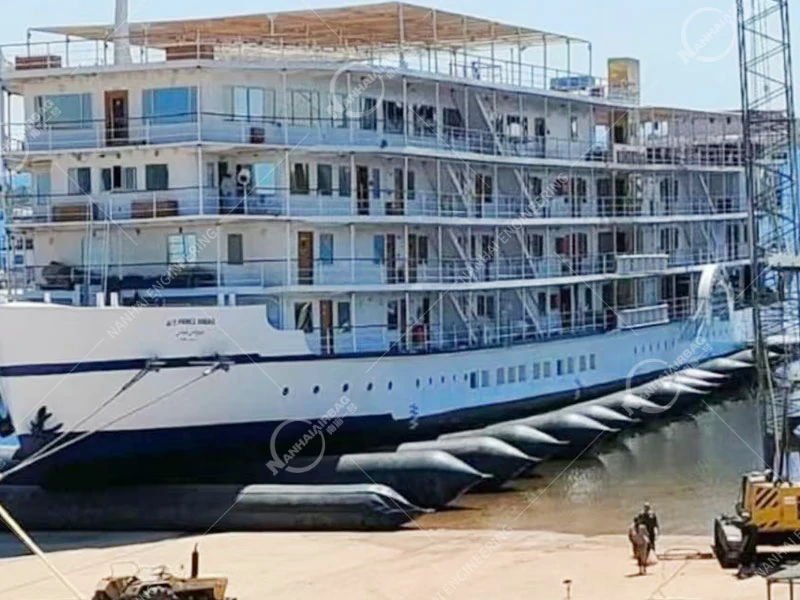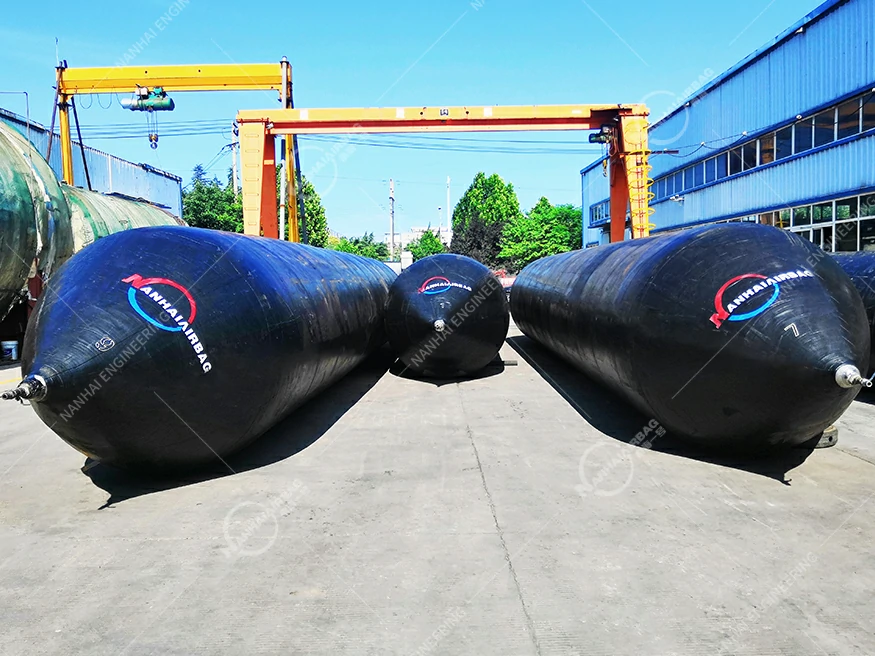D-Rubber Fenders: The Unsung Heroes Saving Docks, Boats, and Your Bottom Line
07/10/2025

Ship launching airbags aren’t just giant rubber balloons—they’re the unsung heroes that turn high-stakes ship launches into smooth, stress-free events. Whether you’re putting a 500-ton fishing trawler or a 15,000-ton cargo ship into the water, these inflatable rubber tubes take the guesswork out of launches—without damaging hulls, ramps, or budgets.
Why This Matters: When a Failed Launch Costs More Than You Think
Let’s cut to the chase: Launching a ship is a $10M+ gamble. A single stuck ramp can blow that budget—and your reputation.Take a shipyard in Jacksonville, FL. Last spring, they tried to launch a 10,000-ton tanker using cranes and hydraulics. The ship got stuck halfway—screech—and scraped the concrete ramp, causing 800kinhulldamage.Tugsspent8hourspullingitfree,delayingthevoyageby3weeks.Lostcargocontracts?2 million.The yard manager swore off old methods after that. Now they use ship launching airbags. For their next launch, a 12,000-ton container ship glided into the water in 10 minutes—no damage, no delays, no heart attacks. “It’s like night and day,” he said. “Airbags take the risk out of launching.”Here’s why you can’t ignore this:
- •Costly Damage Prevention: Traditional launches rely on cranes (which drop loads) or hydraulics (which slip). Airbags distribute the ship’s weight evenly, so no hull cracks, no ramp spalling, no million-dollar repairs.
- •Time = Money: Airbags let ships launch in minutes, not hours. For busy shipyards, that’s more launches per day—higher revenue, happier clients.
- •Safety First: Launching a massive vessel is dangerous. Airbags stabilize the ship, reducing the risk of rollovers or collisions with nearby equipment.
What Exactly Are Ship Launching Airbags? (No, They’re Not Pool Toys)
Ship launching airbags are large, industrial-strength rubber tubes made from EPDM or neoprene, reinforced with steel wires or fabric. They’re shaped like elongated sausages—typically 10–200 feet long—and designed to be placed under a ship’s hull during launch. When inflated with compressed air, they lift the vessel slightly (6–12 inches) off the launch ramp, creating a low-friction path into the water.Think of them as “underwater cushions”: they absorb the ship’s weight, reduce drag, and guide it smoothly into the sea. No heavy machinery, no human error—just physics doing its thing.
How Do They Work? The Science of a Smooth Launch
These aren’t magic—they’re engineering. Here’s the breakdown:
- 1.Placement: Airbags are positioned under the ship’s hull, aligned with the launch ramp.
- 2.Inflation: Compressed air fills the bags, lifting the ship slightly off the ramp.
- 3.Launch: The ship glides into the water on its own, propelled by its own weight and momentum.
- 4.Deflation: Once the ship is free, the airbags are deflated, rinsed, and stored for the next use.
Simple. Effective. Genius.
Ship Launching Airbags vs. Old-School Methods: Why They Win
Let’s compare to the “usual suspects”:
- •vs. Cranes: Cranes cost 5k/daytorent,requireskilledoperators,andcandroploads(totalingaship).Airbags?2k per launch, reusable, and zero risk of dropping.
- •vs. Hydraulic Jacks: Hydraulics are rigid—they can slip and crush workers. Airbags conform to the hull, ensuring even pressure and no slippage.
- •vs. “Free Launch” (Gravity): Free launches rely on tides and luck. A sudden wave can stall the ship, leading to hours of delays. Airbags provide controlled buoyancy—predictable, safe, and fast.
People Also Ask: Your Top Ship Launching Airbag Questions
We get these all the time—let’s clear things up:Q: How big do ship launching airbags get?A: They range from 10 feet (small fishing boats) to 200+ feet (mega-tankers). Custom sizes are available for unique hulls (like luxury yachts).Q: Can they be reused?A: Absolutely. High-quality airbags last 5–10 years with proper care (rinse salt off, inspect for cracks). Most yards reuse them 50+ times.Q: Are they safe for the environment?A: Yes. The rubber is non-toxic, and modern airbags avoid puncturing hulls or leaking chemicals. Many brands use recycled materials.Q: How long does a launch take with airbags?A: 5–15 minutes—depending on ship size. Smaller vessels? Under 10 minutes.Q: Do I need special training?A: Basic training is recommended, but most yards learn on the job. Manufacturers provide guidelines for safe inflation and placement.
Final Thoughts: Don’t Risk Your Next Launch
If you’re a shipyard, maritime operator, or cargo company, you know: a failed launch can sink your profits—and your reputation. Ship launching airbags aren’t a luxury—they’re a necessity. They’re affordable, reusable, and built to handle the biggest ships on the water.Stop wasting money on cranes, hydraulics, and repairs. Invest in ship launching airbags, and watch your launches become smooth, safe, and profitable. Your crew, your clients, and your bottom line will thank you.Keywords: marine airbags, marine fenders, rubber fendersP.S. Pro tip: Look for airbags with a “rebound rating” of 85% or higher. That means they bounce back faster—ready for the next launch in minutes. Trust us, it’s worth it!
